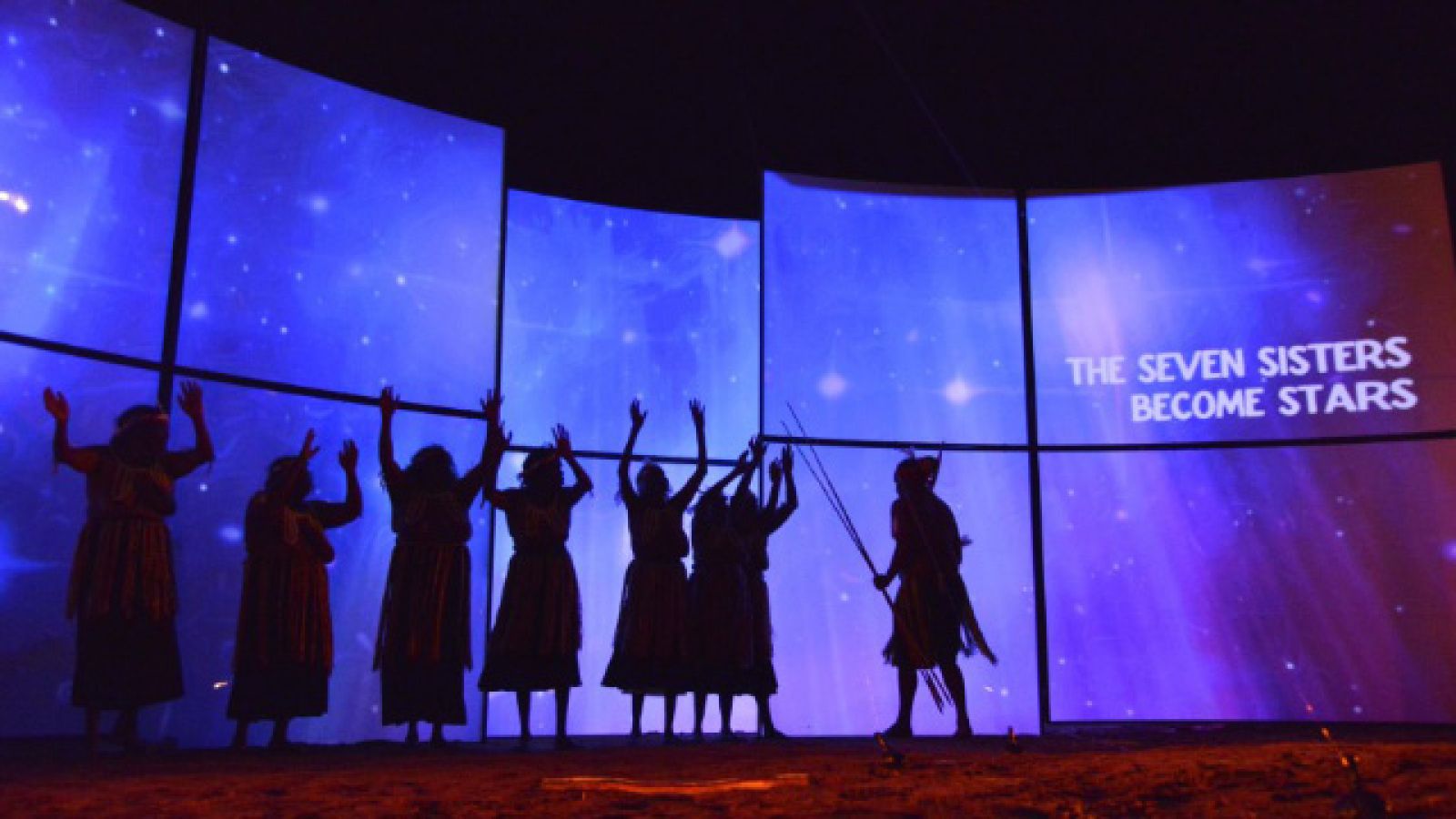Recording ancient Aboriginal Songlines

The Kungkarangkalpa Seven Sisters fly up to become the Pleiades in the night sky, performance at the NMA, March 2013. Photo: Wayne Quilliam, courtesy of Songlines of the Western Desert ARC Project and presenting partner the Centenary of Canberra.
Researchers at The Australian National University (ANU) are working to record ancient Indigenous Songlines - the encyclopaedia-like sources of Aboriginal cultural information passed down from generation-to-generation through song and dance.
Lead researcher Dr Diana James, of the ANU School of Archaeology and Anthropology, was approached by senior Indigenous people of the Ngaanyatjara Pitjantjatjara Yankunytjatjara region to help record their elders' knowledge for future generations.
"The people that have the incredible encyclopaedic memory bank are passing. I call them living libraries, they are extraordinary in the breadth and depth of their knowledge,' Dr James said.
"New generations of Indigenous kids are attending school and learning on computers. So the elders want their knowledge to be accessible through the digital media these kids love.
"These are huge song sagas. Learning these takes years. The realisation is that most young people no longer have time to practise the skill of remembering all this stuff orally."
Songlines - the living narrative of our nation is the national theme for the 2016 NAIDOC week.
Dr James has worked with Indigenous organisations in South Australia since 1975 when she started with the Anangu Pitjantjatjara Yankunytjatjara Land Council, who won land rights in 1981 for an area in the north-west of South Australia.
She said few Australians understood the significance of the information contained within Aboriginal Songlines.
"It's the wisdom that has been handed down orally over thousands of years," she said.
"It holds a huge amount of information about how the landscape was created, where the waterholes are, where the foods are created, how the kinship system works. Their whole history is encoded in these songs."
A senior Pitjantjatjara elder, Kunmanara Tjilari, told Diana that by knowing the Songlines he could go to country for the first time and know where to find food and water, what plants and animals were in the area, and the location's history.
The research project stems from a four-year ARC Linkage Grant. It focuses on the recording of two Songlines - the Ngintaka Perentie Lizard that goes through South Australia and up to the tri-state border of NT and WA, and the Seven Sisters, which stretches across the vast Western Desert.
Researchers worked with different dialect groups of the Western Desert language who have held this story very strongly for thousands of years across a vast area of country.
The research will culminate in a major exhibition in collaboration with the National Museum of Australian. The Seven Sisters exhibition will open in September 2017.
The project has been managed in partnership with the Ananguku Arts and Culture Aboriginal Corporation and the Ngaanyatjara Pitjantjatjara Yankunytjatjara Women's Council. Research in Western Australian has been in collaboration with the Ngaanyatjarra Council, Martumili Artists and Kanyirninpa Jukurrpa.
Dr James said the task is now to ensure all the recordings are repatriated to collaborating organisations Aboriginal Archives, including Ara Irititja at the South Australian Museum and Australian Institute of Aboriginal and Torres Strait Islander Studies.